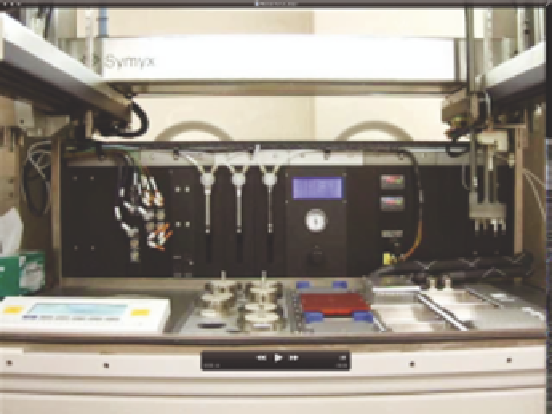Environmental Engineering Reference
In-Depth Information
Movie 6.5.1
MOF synthesis in action
The robot is preparing different solvent mixtures and putting them in a plate with 64
small vessels in which the MOFs are formed.
Video by Professor Jeff Long, UC Berkeley
.
This movie can be viewed at:
http://www.worldscientifi c.com/worldscibooks/10.1142/
p911#t=suppl
subsequent activation of the material removes the solvent molecules and
leaves an open metal site. The presence of these coordinatively unsatu-
rated metal sites affords some robust chemistries for adsorption and the
enhanced separation of gasses.
Figure 6.5.3
gives an example of such a
structure.
Interpenetration as a strategy for selective adsorption
MOFs can be synthesized with many different types of linkers, and one
would assume that by changing the length of the linker one could
tune the pore sizes. However, for some systems the pore space can
become so large that it is more favorable to form interpenetrated frame-
works [6.32]. The high pressure adsorption capacity of these materials is
lower than that of the corresponding non-interpenetrated structures, but
at low pressure they can have a good selectivity toward CO
2
.









Search WWH ::

Custom Search